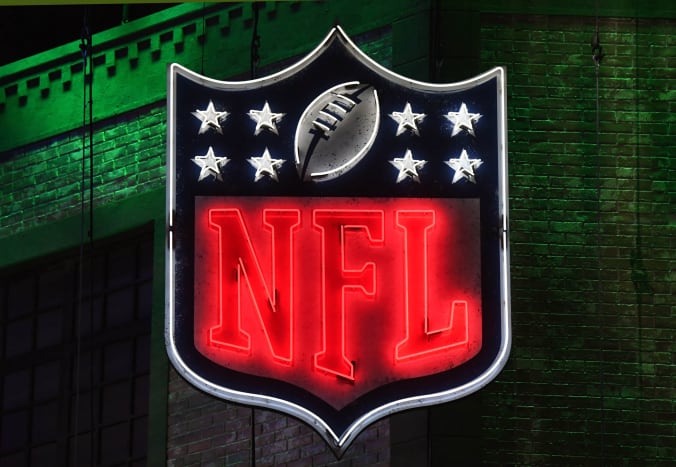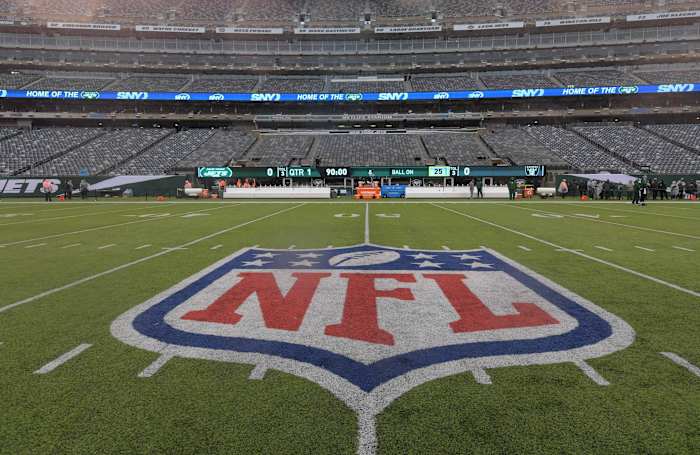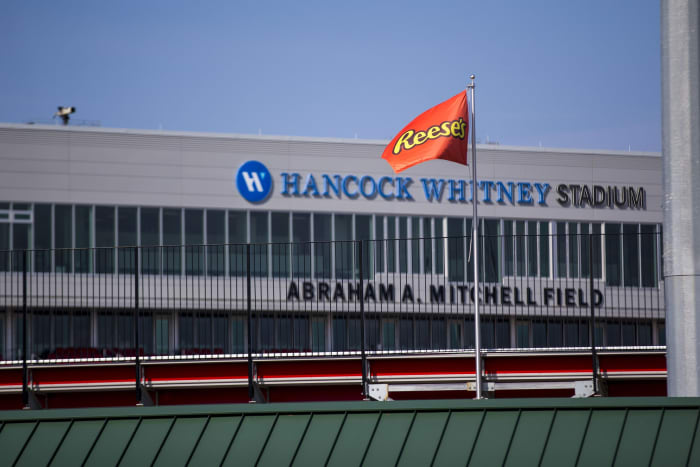Scouting Primer for New York Giants' Top Offseason Needs: Part 2, Inside Linebacker and Quarterback

As the offseason has officially begun for the Giants, it’s now time for the franchise to look ahead toward the next four to five months as they look for ways to greatly enhance the roster from top to bottom.
Here, we continue our scouting position primer to highlight the key specific traits to look for in two more positions of need for NYG – inside linebacker and quarterback.
Inside Linebacker: The Key Traits
When evaluating inside linebackers, it’s very important to classify them properly scheme-wise. 4-3 outside linebackers are usually the same as 3-4 inside linebackers. In a traditional 4-3, you have a "Mike" (middle linebacker), "Sam" (strong-side linebacker), and "Will" (weak-side linebacker), whereas, in a 3-4, it’s typically just "Mike" and "Will" (some teams call it “Mo”).
Usually, Mikes and Wills are a very similar profile in both schemes, but the difference lies in the Sam backer. If a player is the Sam backer in a 4-3, it’s because that team prefers he play to the strong side of the formation, and therefore his skillset probably translates closer to a Mike than a Will (translating them to a 3-4), as he’s more of a run-first, heavy-bodied player as opposed to a Will who oftentimes is a more athletic coverage player.
That being said, while the Giants defensive scheme for 2022 is still unknown given the status of head coach Joe Judge and defensive coordinator Patrick Graham (who could draw head coaching consideration from other teams), the two main positions we’ll focus on in this article are the Mike and Will, since that’s the defense Giants fans know from the last few years.
A Mike is often thrust into an important leadership/communication role in the defense given their central location and ability to communicate efficiently with both the front and the back end of the defense. However, this responsibility can be given to a Will backer as well – it just depends on which player that team trusts more and who will be on the field more.
Most importantly, when talking about a Mike backer, instincts and ability to find the ball are essential to playing at a high level since they are heavily involved in the run game. The best and smartest Mike’s in the league are the ones that play with a high IQ and who can recognize things both pre- and post-snap that allow them to be in positions to make plays.
While having plenty of athletic flaws, Blake Martinez is among the best in the NFL at this. He does an outstanding job of “tempo-ing the ball,” meaning he’s following the ball post-snap and slowly positioning himself to be in the right spot to make a play as long as he’s uncovered. With plenty of offenses across the league utilizing pre-snap motions to try and fool defenders, it places an extra emphasis on having good eye discipline, something all defenses need from their Mike.
Next, the physical nature of the position means a Mike must have good play strength. On a consistent basis, the Mike is taking on blockers; thus, a player’s violence and strength upon contact can greatly impact his ability to “take on.” Then, hand use takes over, as the player aims to disengage from the blocker and make a play.
A common term used when evaluating linebackers is “stack and shed.” If a linebacker has good “stack and shed” skills, it means he can take on blocks, square them up, and then shed the player and uncover from the blocker. Playing with your hands is key to being an elite defender regardless of what position you play, but it’s a non-negotiable trait for a Mike backer in order for that player to be productive.
For Will backers, good play strength, hand use, and instincts are desired as well, but athletic ability and skills to succeed in space are prioritized more than the former. Most Wills are used more in the passing game, thus making their speed, change of direction, and explosiveness highly useful.
The Will position is also for versatile body types and players with unique skill sets to be used freely across the formation. Isaiah Simmons (Cardinals) and Micah Parsons (Cowboys) are examples of this. Both those players are “position-less” in a sense that they can align all over, but if you had to classify them into only one bucket, they’d be Will backers. They’re both athletic freaks that are deployed in space, both run/pass and rushing the passer.
Another significant evaluation piece of a Will backer is their ability to cover. Teams often match Will backers against tight ends or running backs, as they’re similar body types to those players, making them a logical pass game matchup.
What also has to be vetted is the player’s “zone awareness.” Zone defense is very popular in the NFL, but playing zone properly requires awareness, feel, and understanding of certain landmarks on the field and how a defense is going to cover that space.
All the qualities mentioned above blend together at both the Mike and Will position. Of course, all teams would love a Mike that also is a freak athlete that can run and cover in addition to having great instincts, play strength, and hand use, but those players aren’t easy to find.
Instead, if a scouting department can properly assemble two of three players that combine to possess the above traits, it’s with the hope that the defensive coordinator will deploy them in spots that mask their flaws and accentuate their strengths.
What the Giants need to add:
A couple of years ago, in free agency, the Giants paid up for Blake Martinez, a Mike backer who became a focal point of the defense leadership and production-wise.
They have, however, not spent money or draft capital getting a strong second linebacker to pair with him. They passed on Isaiah Simmons and Micah Parsons in back-to-back drafts and did not spend money in free agency to find one.
From a team-building standpoint, not investing heavily in more than one inside linebacker is very common around the league due to the increase in the dime (six defensive backs) packages being played.
It’s understandable the Giants would forgo getting a strong second linebacker to fill other needs. However, it is still a weakness in their defense that needs to be addressed.
Since Martinez is that true Mike, they need a true Will backer type to serve other roles effectively. Martinez’s contract is up after the 2022 season, so unless the Giants plan to extend him, they'll also have to look into finding and grooming his replacement.

Mock draft season is back and with the Giants about to have one of the most important drafts in the last decade, Zack Dietz has this first edition of a very early seven-round Giants mock draft.

The Giants have a lot of work to do this off-season to restock key position units. In this article, former NFL scouting intern Tom Rudawsky takes a look at the top characteristics the Giants may be looking for in two critical areas of need: outside linebacker and offensive line.

The Reese's Senior Bowl rosters are taking shape, so Nick Falato took a look at some early prospects who could draw interest from the Giants.
Quarterback: The Key Traits
The quarterback position has seen a lot of evolvement over the last decade or so. Players like Lamar Jackson, Kyler Murray, and Jalen Hurts have brought heightened awareness to a quarterback's running ability – nobody can dispute how dynamic those three are with their legs.
Despite this, it’s still clear that the top key to successful quarterback play is a player’s ability to make plays from inside the pocket. This manifests itself due to many factors.
First, if you don’t have poise and can’t handle pressure in the pocket, it’s hard to play the position at a high level. Does a player stay calm, keep his eyes downfield, and make smart decisions in the face of pressure? Or does he panic, make poor decisions, and make off-target throws?
The ones that struggle with turnovers often do the latter far too often. Daniel Jones has terrific mechanics and is a super tough kid, but his decision-making is still lagging behind a little bit and is a big reason for some of his turnovers.
Not only poise in the pocket, but movement skills and athleticism to navigate the pocket are signs of a quality pocket passer.
Tom Brady, while not having top-tier athleticism, does possess rare pocket poise and feel – meaning he can step up, slide, and move very well inside the pocket to alter the angle of the throw and set his feet to where he can deliver it accurately and on time. You rarely, if ever, see Brady rattled or playing "sped up," and this is one of many special traits he has.
Quarterback is definitely one of the tougher positions to play in football, and that’s because there’s a tremendous mental burden and responsibility that comes with the position. As the only player besides the center that touches the ball every play, there are decisions to be made every play by the quarterback.
Whether it’s pre-snap adjustments, run/pass decisions on an RPO, or when to deliver the ball, the autonomy that every quarterback possesses is substantial. This is why leadership and command are so important – a quarterback must show he has ownership of the offense and must grasp the intent of each play. Obviously, he must also show he has the physical capabilities to execute that play.
This leads us to the next part: the physical qualities. While some shorter quarterbacks have succeeded in the league, most stand at least 6-foot-2 and have a minimum of a 210-pound frame.
Size and bulk are so valuable because it speaks to the hopeful durability of the player. Quarterbacks are routinely tackled by 250+-pound athletes running full speed, and the biggest thing that can sink a team’s season is when their franchise quarterback suffers a major injury.
Arm strength can enamor fans and decision-makers alike, and some of the best passers in the sport possess rocket-like arms that represent being able to make game-changing throws in the vertical passing game, like Patrick Mahomes (Chiefs) or Matthew Stafford (Rams).
Some players have rocket arms, but they lack good accuracy, mechanics, and consistency to operate an offense (Mike Glennon). So much of leading a productive offense from the quarterback position is being efficient and taking what the defense gives.
This is something Mac Jones (Patriots) has done a great job of in his rookie season – he is very accurate, knows where to go with the ball, and plays under control, all while having remarkable command and poise for a rookie.
What the Giants need to add:
Regardless of what you think about Daniel Jones, it’s hard to deny that it makes sense for the Giants to at least give him a chance to compete for the starting job in 2022. He’s on a cost-controlled rookie contract and is someone everybody in the building respects (not to mention the free agency and draft quarterback class leaves a lot to be desired).
I understand chasing a potentially elite talent at the position, but if there isn’t one available, running it back with Jones really does make the most sense.
Make no mistake about it, though; he’s got to win more games, stay healthy, and play better football. Outside of Jones, the Giants have to add better players at this position. If Jones goes down--and he's done so every year he's been in the league--you have to be able to get better quarterback play than what Mike Glennon and Jake Fromm provided, which gave the Giants zero chance to win.
Granted, backup quarterback play around the league is not very good in general, but if Jones does indeed miss time in 2022, it can’t automatically turn the Giants into a non-competitive football team.
Safe to say, whether it’s acquiring a player to compete with or replace Jones as the starter or getting a solid No. 2, New York must upgrade at this position.
Join the Giants Country Community
- Sign up for our FREE digest newsletter
- Follow and like us on Facebook
- Submit your questions for our mailbag
- Listen and subscribe to the daily LockedOn Giants podcast.
- Subscribe and like the new LockedOn Giants YouTube Channel
- Sign up for our FREE message board forums
